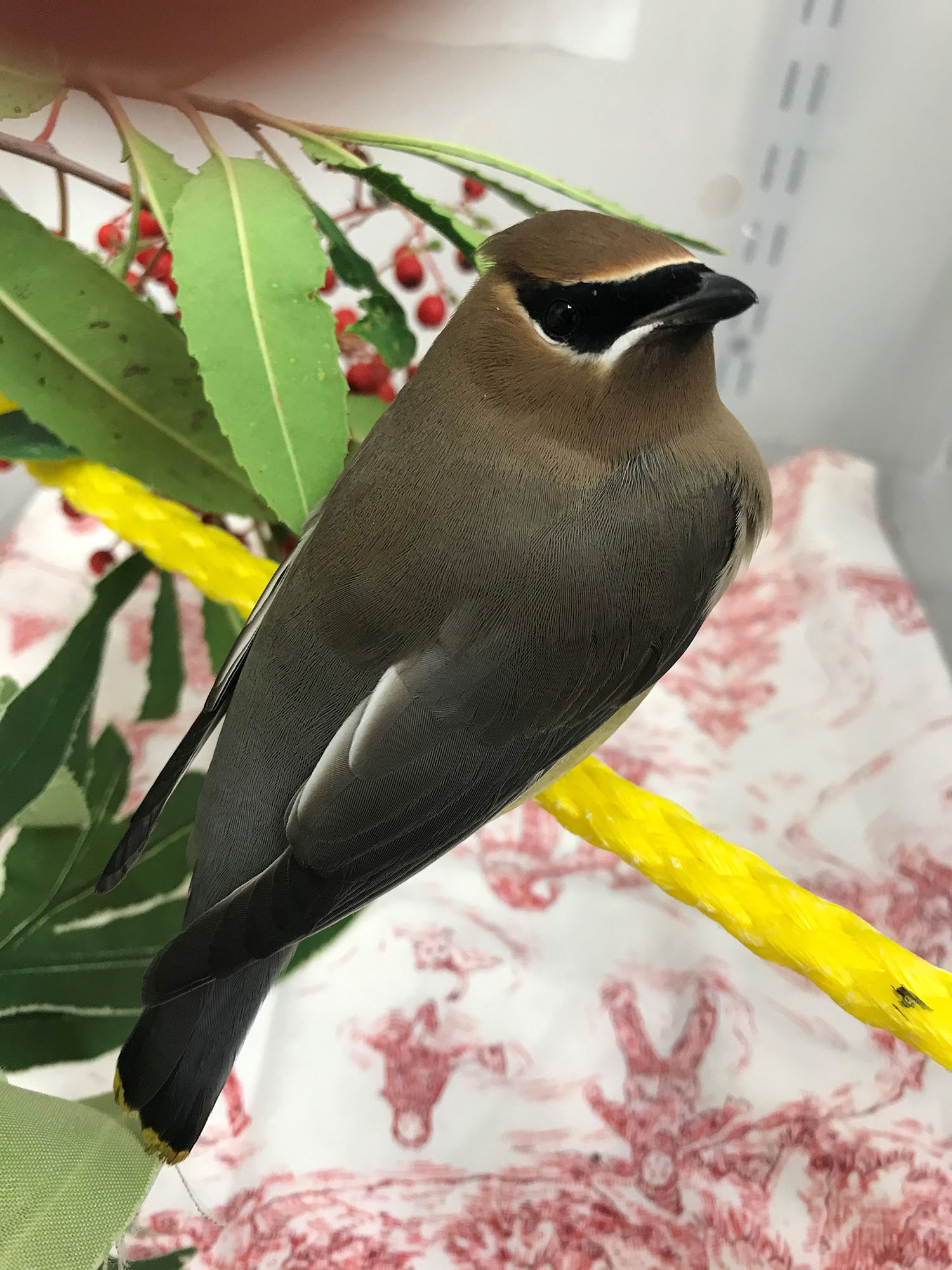Cedar Waxwings: A Welcome Winter Visitor
By Cori Carlson, Administrative Assistant

Cedar Waxwing
Photo by Stephany Lewis
California Wildlife Center admits migratory birds every year. One winter patient is the Cedar Waxwing, named for the waxy red tips on their secondary wing feathers (the feathers that help them get lift) and their fondness of cedar berries. A few other distinctive characteristics are their crested heads and black coloring around their eyes, which looks like a mask. These birds range mostly in the northern half of the United States and aren’t too picky about their surroundings. They can be found from forest areas to grasslands to suburban areas. Last year, we received 22 of these yellow-bellied birds. So far this year, we have admitted four.
While the Cedar Waxwings eat fruit year-round, they also eat insects during the summer months. Sometimes, if the fruit is overripe and starting to ferment, they become a little tipsy. A large percentage of the Cedar Waxwings admitted to our hospital are due to window strikes, which can sometimes be related to intoxication.
When the birds are at CWC, their diet consists of an assortment of berries and mealworms. When one first arrives, we offer a smorgasbord of berries such as blueberries, blackberries, strawberries, and grapes. Each bird has their preference, so offering a variety of berries allows us to customize each patient’s diet. We are also fortunate to have native Toyon bushes on-site that provide our patients with delicious red berries. When the Cedar Waxwings move to outdoor enclosures, we make sure to provide them with branches from Toyon bushes as they would find in the wild.
To help protect Cedar Waxwings, take care to avoid plants with toxic berries. The Nandina shrub, also known as sacred bamboo or heavenly bamboo, produces an extremely toxic red berry. While it is often popular with landscapers, the berries contain cyanide and other alkaloids, which are extremely poisonous to all animals.
At CWC, Cedar Waxwings get a longer acclimation period than other birds between leaving the intensive care unit and moving to an outdoor enclosure because they are more sensitive to temperature changes. Instead of a sudden move to outdoor aviaries, the birds are placed in small, moveable pens when they are ready to leave the hospital. We put them in partial sun during the day and bring them back inside in the evening to help prepare them for life outdoors. During this time, we monitor them carefully. If their appetite decreases or they stop eating, it is a sign of stress, so we slow down the process. Once they have acclimated to the weather, they spend the rest of their rehabilitation time in an outdoor enclosure strengthening their muscles for flight before their release.

I love the Cedar Waxwings! We brought one to your facility a few years ago with a broken wing, but unfortunately it could not be saved. We appreciated your efforts to save it. I had never even heard of them, and finding it in our yard actually started our birdwatching hobby!
Nice respond in return of this difficulty with firm arguments and explaining all on the topic of that. Marianne Dar Blight